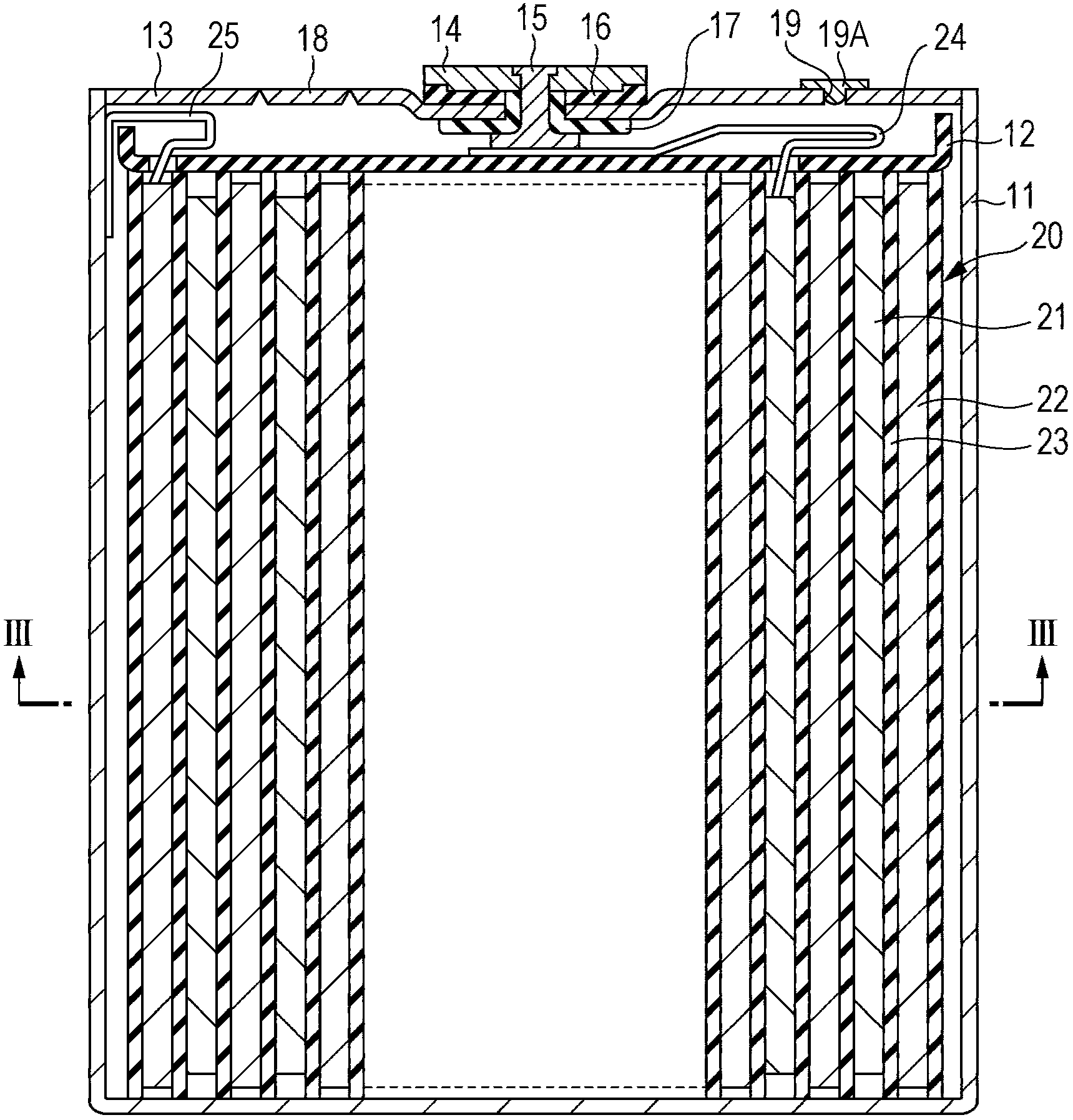Lithium-ion secondary battery, negative electrode for lithium-ion secondary battery, battery pack, electric vehicle, power storage system, electric tool, and electronic device
A secondary battery and lithium ion technology, applied in battery electrodes, secondary batteries, circuits, etc., can solve the problem of battery characteristics degradation and achieve excellent battery characteristics
- Summary
- Abstract
- Description
- Claims
- Application Information
AI Technical Summary
Problems solved by technology
Method used
Image
Examples
experiment Embodiment 1-1 to 1-10
[0217] Produced by the procedure described below Figure 7 with Figure 8 The laminated film type secondary battery shown in .
[0218] The positive electrode 53 is formed. First, 91 parts by mass of positive electrode active material (LiCoO 2 ), 6 parts by mass of a positive electrode conductive agent (graphite), and 3 parts by mass of a positive electrode binder (polyvinylidene fluoride: PVDF) were mixed together to form a positive electrode mixture. The positive electrode mixture was dispersed in an organic solvent (N-methyl-2-pyrrolidone: NMP) to form a paste-like positive electrode mixture slurry. The positive electrode mixture slurry is then coated on both surfaces of the positive electrode current collector 53A using a coating device, and dried to form the positive electrode active material layer 53B. As the positive electrode current collector 53A, a strip-shaped aluminum foil (thickness: 12 μm) was used. Finally, the positive electrode active material layer 53B w...
experiment Embodiment 2-1 to 2-88
[0232] As shown in Table 2 to Table 5, secondary batteries were produced by the same procedure as in Experimental Examples 1-1 to 1-8 except that different types, ratios and combinations of M1 metals were used. The characteristics of each resulting secondary battery were examined. In this case, in order to carry out with powdered SiO y For co-deposition, other powdered metal M1 (such as Al) was used.
[0233] Table 2
[0234]
[0235] table 3
[0236]
[0237] Table 4
[0238]
[0239]
[0240] table 5
[0241]
[0242] As with the results shown in Table 1, high cycle retention, high initial efficiency, and high load retention were obtained even when using different types, ratios, and combinations of M1 metals.
experiment Embodiment 3-1 to 3-12
[0244] As shown in Table 6, secondary batteries were produced by the same procedure as in Experimental Examples 1-1 to 1-8 except that the negative electrode active material contained Li. The characteristics of each resulting secondary battery were examined. In this case, in order to carry out with powdered SiO y For co-deposition, an additional powdered metal M1(Li) was used. The anode active material used here contains Li in an uncharged state.
[0245] Table 6
[0246]
[0247] High cycle retention, high initial efficiency, and high load retention were obtained even when M1 contained Li. Furthermore, the initial efficiency is further increased when the anode active material contains SiM1O (SiLiO).
PUM
| Property | Measurement | Unit |
|---|---|---|
| Median diameter | aaaaa | aaaaa |
Abstract
Description
Claims
Application Information
 Login to View More
Login to View More - R&D
- Intellectual Property
- Life Sciences
- Materials
- Tech Scout
- Unparalleled Data Quality
- Higher Quality Content
- 60% Fewer Hallucinations
Browse by: Latest US Patents, China's latest patents, Technical Efficacy Thesaurus, Application Domain, Technology Topic, Popular Technical Reports.
© 2025 PatSnap. All rights reserved.Legal|Privacy policy|Modern Slavery Act Transparency Statement|Sitemap|About US| Contact US: help@patsnap.com



